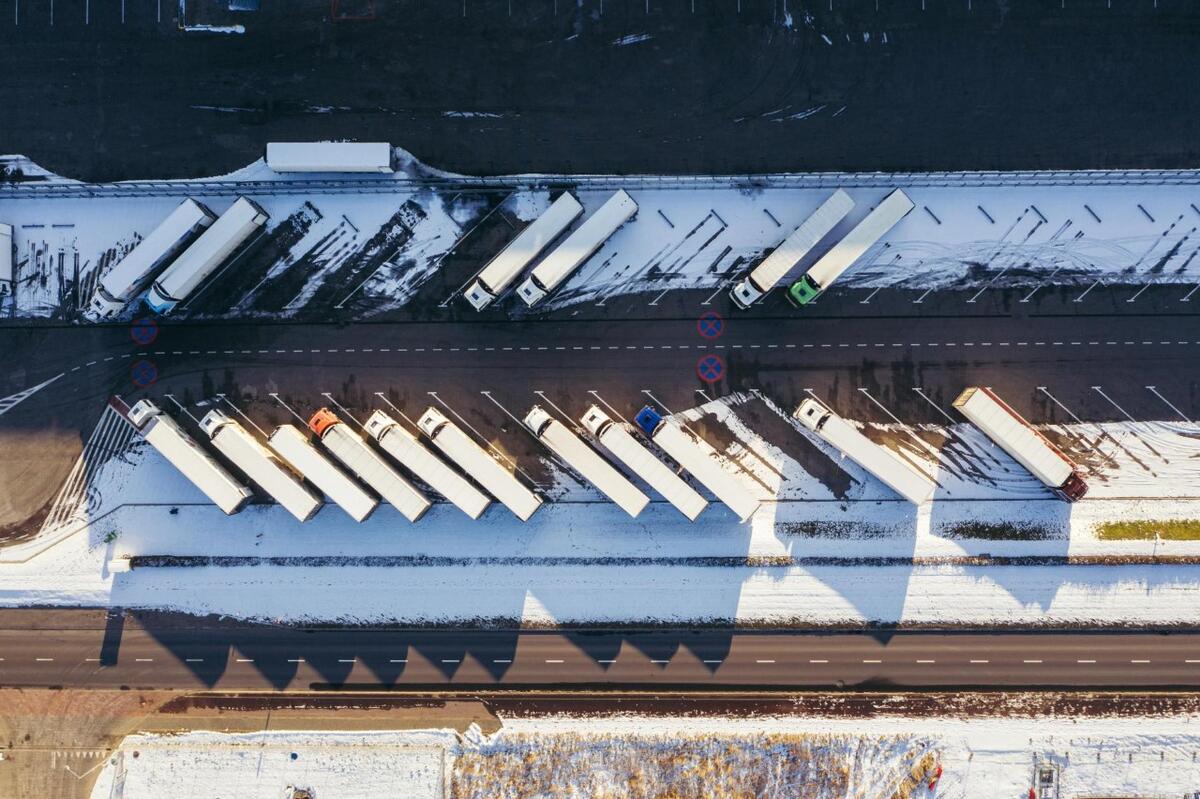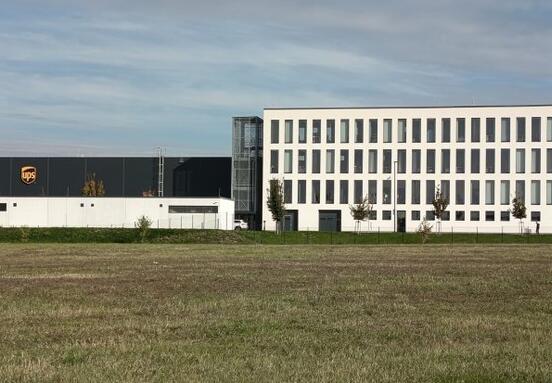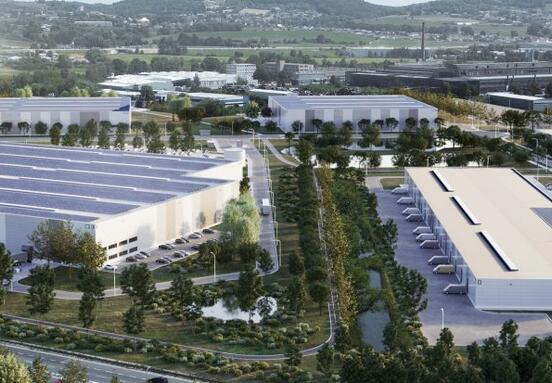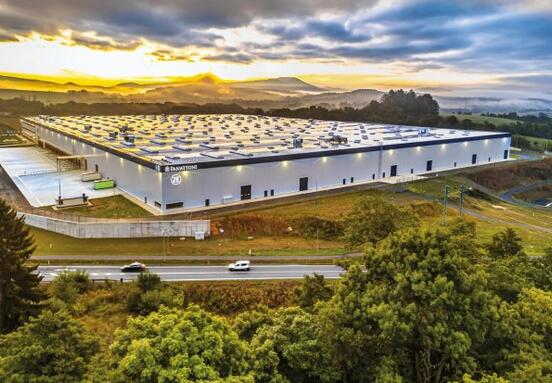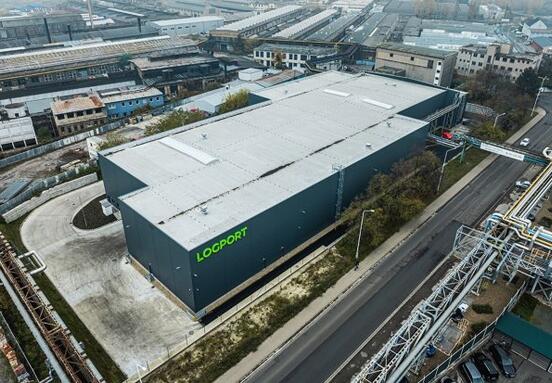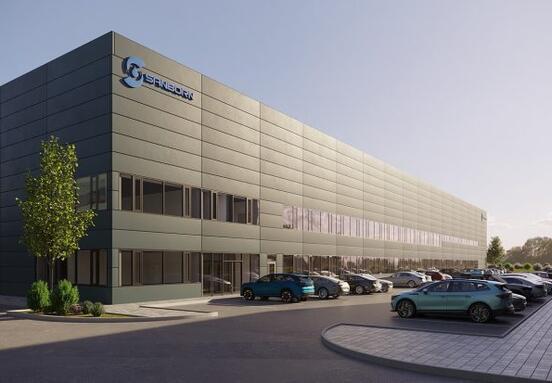The largest number of new areas were commissioned in the Olomouc region (25%). However, more than half were delivered within a single project, the newly built hall of the Amazon company in Panattoni Park Kojetín. Moravskoslezský and Plzeňský regions took second and third place (20% and 10% of new areas, respectively).
The largest number of new areas were commissioned in the Olomouc region (25%). However, more than half were delivered within a single project, the newly built hall of the Amazon company in Panattoni Park Kojetín. Moravskoslezský and Plzeňský regions took second and third place (20% and 10% of new areas, respectively).
Will new construction help raise vacancy from less than 1%?
Although there is a lot of talk about new deliveries to the market and a high amount of space under construction, vacancy remained extremely low throughout the year at around 1%. At the end of 2022, there were 102,100 m2 of immediately available space, representing 0.95% of all space on the market. The Czech Republic thus firmly remains a landlord's market, and this situation will not change throughout 2023. Only two industrial parks offered immediately available areas above 10,000 m2.
The year 2022 was also a record year in terms of unoccupied industrial areas. “During Q3 2022, the national vacancy rate fell below 1% for the first time since the beginning of our historical records, to 0.86% of the total volume of space available on the market. Just two years ago, at the end of 2020, this share was 3.65%," says Josefína Kurfürstová, an analyst at Colliers. All subjects operating on the market are logically interested in the question of when the market will return to previous values. While it appears that developer projects are finally catching up to the surge in demand from the previous two years, there are no clear signs yet whether this will be enough to help alleviate the limited availability of industrial properties in the local market. “Theoretically, the planned deliveries of new space that we expect in 2023, combined with an unfavorable macroeconomic situation, could support an increase in vacancies already in 2023, as the market is changing rapidly. Realistically, however, we do not expect any drastic changes in the availability of industrial areas, at least not in the first half of this year," explains Josefína Kurfürstová.
Demand exceeded 2 million square meters, pre-leasing predominates
Blocked availability in industrial real estate could be affected by cooling demand. In 2022, however, despite the expected slowdown, the Czech market maintained almost the same demand as in 2021. The gross realized demand was equal to almost 2,209,000 m2, which represents only a 10% decrease compared to 2021 and a 37% increase compared to the results of the pre-pandemic year 2019. This is remarkable given the adverse economic conditions in which businesses had to operate in 2022. Even more remarkable is the share of net realized demand, which increased significantly in 2021 (to 63%) and remained the same high in 2022, even rising again by several points (to 66% in 2022). Newly built premises disappeared from the market en masse throughout the year, as pre-leases accounted for 40% of all leases.
Even in the area of the leases themselves, we broke the previous record in 2022, when a tenant pre-leased over 230,000 m2 in Panattoni Park Cheb in a confidential transaction - which is the largest transaction ever recorded on the Czech industrial space market. Logistics and transportation tenants accounted for the largest share of leases (37%), followed by car manufacturers (13%) and retail omnichannel distributors (12%).
Even without the aforementioned exceptional transaction, however, the market would have achieved good results in last year's turbulent year. Only in the last quarter did we notice a noticeable slowdown in activity, when there was a gross realization of 354,000 m2. This represents a 27% quarter-on-quarter decline and a 45% year-on-year decline. Of the total area of new areas, 231,300 m2 were net leases, which means a slow quarter compared to the three-year average. However, given that the adverse effects of the economic slowdown are being felt and all available market space is practically exhausted, this is not at all surprising.
Rents increased across the market last year
Rents continued to rise during 2022, both in Prague and in all other regions of the Czech Republic. In the most attractive locations in the country, rents have increased to around €7.50-7.90/m2/month. The highest achievable rent was in Prague, for specific projects up to €8.50/m2/month. In selected first-class locations outside of Prague, rents rose rapidly this year to around €6.00/m2/month. The rent for office units was in the range of €9.50-12.5/m2/month. Service charges are usually around €0.65-1.00/m2/month. In terms of prices, the Czech commercial real estate market quickly caught up with its Western European counterparts in 2022.
After crossing the 10 million square meter mark, it is expected to quickly reach 12 million
"A year ago, we predicted the expansion of the market. This year, it will not be easy to maintain the results of the massive growth that the market has seen in the last two years. Even so, there are reasons for optimism. Currently, more than 1 million m2 are under construction and almost all of these areas are to be completed during 2023. This would mean that the market will easily surpass the 11 million m2 mark of modern p
Although there is a lot of talk about new deliveries to the market and a high amount of space under construction, vacancy remained extremely low throughout the year at around 1%. At the end of 2022, there were 102,100 m2 of immediately available space, representing 0.95% of all space on the market. The Czech Republic thus firmly remains a landlord's market, and this situation will not change throughout 2023. Only two industrial parks offered immediately available areas above 10,000 m2.
The year 2022 was also a record year in terms of unoccupied industrial areas. “During Q3 2022, the national vacancy rate fell below 1% for the first time since the beginning of our historical records, to 0.86% of the total volume of space available on the market. Just two years ago, at the end of 2020, this share was 3.65%," says Josefína Kurfürstová, an analyst at Colliers. All subjects operating on the market are logically interested in the question of when the market will return to previous values. While it appears that developer projects are finally catching up to the surge in demand from the previous two years, there are no clear signs yet whether this will be enough to help alleviate the limited availability of industrial properties in the local market. “Theoretically, the planned deliveries of new space that we expect in 2023, combined with an unfavorable macroeconomic situation, could support an increase in vacancies already in 2023, as the market is changing rapidly. Realistically, however, we do not expect any drastic changes in the availability of industrial areas, at least not in the first half of this year," explains Josefína Kurfürstová.
Demand exceeded 2 million square meters, pre-leasing predominates
Blocked availability in industrial real estate could be affected by cooling demand. In 2022, however, despite the expected slowdown, the Czech market maintained almost the same demand as in 2021. The gross realized demand was equal to almost 2,209,000 m2, which represents only a 10% decrease compared to 2021 and a 37% increase compared to the results of the pre-pandemic year 2019. This is remarkable given the adverse economic conditions in which businesses had to operate in 2022. Even more remarkable is the share of net realized demand, which increased significantly in 2021 (to 63%) and remained the same high in 2022, even rising again by several points (to 66% in 2022). Newly built premises disappeared from the market en masse throughout the year, as pre-leases accounted for 40% of all leases.
Even in the area of the leases themselves, we broke the previous record in 2022, when a tenant pre-leased over 230,000 m2 in Panattoni Park Cheb in a confidential transaction - which is the largest transaction ever recorded on the Czech industrial space market. Logistics and transportation tenants accounted for the largest share of leases (37%), followed by car manufacturers (13%) and retail omnichannel distributors (12%).
Even without the aforementioned exceptional transaction, however, the market would have achieved good results in last year's turbulent year. Only in the last quarter did we notice a noticeable slowdown in activity, when there was a gross realization of 354,000 m2. This represents a 27% quarter-on-quarter decline and a 45% year-on-year decline. Of the total area of new areas, 231,300 m2 were net leases, which means a slow quarter compared to the three-year average. However, given that the adverse effects of the economic slowdown are being felt and all available market space is practically exhausted, this is not at all surprising.
Rents increased across the market last year
Rents continued to rise during 2022, both in Prague and in all other regions of the Czech Republic. In the most attractive locations in the country, rents have increased to around €7.50-7.90/m2/month. The highest achievable rent was in Prague, for specific projects up to €8.50/m2/month. In selected first-class locations outside of Prague, rents rose rapidly this year to around €6.00/m2/month. The rent for office units was in the range of €9.50-12.5/m2/month. Service charges are usually around €0.65-1.00/m2/month. In terms of prices, the Czech commercial real estate market quickly caught up with its Western European counterparts in 2022.
After crossing the 10 million square meter mark, it is expected to quickly reach 12 million
"A year ago, we predicted the expansion of the market. This year, it will not be easy to maintain the results of the massive growth that the market has seen in the last two years. Even so, there are reasons for optimism. Currently, more than 1 million m2 are under construction and almost all of these areas are to be completed during 2023. This would mean that the market will easily surpass the 11 million m2 mark of modern p
